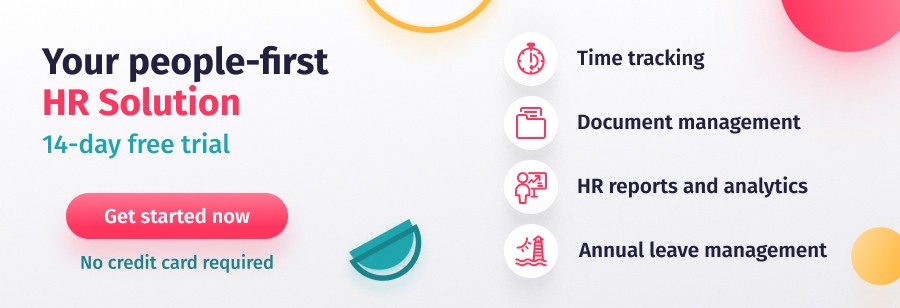‘Long-term sick’ usually refers to someone who has been off work due to sickness for four or more weeks. However, these four weeks don’t have to be continuous. As long as the absences are at least four days and not more than eight weeks apart, shorter absences could be classed as ‘long-term’ sickness. Employees in this situation could therefore be entitled to long-term sick pay. Confusing, right?
The absence could be a result of a physical or mental illness. Organisations are often unsure how to approach long-term sickness in their team, for fear of doing the ‘wrong’ thing. This can sometimes lead to employees being off work for weeks,or even months with no real contact from their manager and no process being followed to either bring them back into work or dismiss them.
In this article, we guide you through how to manage long-term absences from work.
What are the Reasons for Long-Term Sick Leave?
Long-term sickness from work can be caused by a wide variety of reasons, including physical illnesses such as back pain or ‘long COVID’. Unsurprisingly, a recent CIPD survey revealed that over a quarter of organisations have seen a big increase in the number of ‘long COVID’ cases being cited as an absence reason.
However, mental illness is thought to be the most common reason for long-term absences from the workplace. Studies show that just under two-thirds of long-term sickness absences were a result of conditions such as depression and anxiety.
How you approach an absence due to a physical illness will look very different to how you approach a mental or emotional one. This is why it is essential that each long-term absence is looked at on a case-by-case basis and managed accordingly.
What is Long-Term Sick Pay?
Sick pay is paid to an employee when they are unable to work as normal. As with their usual pay, this pay is also subject to tax and national insurance contributions as it’s classed as ‘earnt’. Individuals on long-term sick leave are either entitled to statutory sick pay or occupational sick pay, depending on what’s written into your contracts and company policy.
-
Statutory Sick Pay
Your contracts of employment and company policy should outline what your employees are entitled to. As a minimum, all employees are legally entitled to statutory sick pay as long as they meet the following criteria:
- They must be classed as a current employee.
- They must meet the minimum weekly pay threshold (currently £123 per week).
- They must not be claiming statutory maternity, paternity, shared parental or adoption pay.
Statutory sick pay (SSP) is a weekly amount set by the government (currently £99.35 per week) and payable for up to 28 weeks. After that, if your employee continues to be off work, they should seek other options. For example, they may be eligible to receive certain benefits (e.g. ESA).
SSP does not start until day four of the absence. The first three days are called ‘waiting’ days. The individual will not receive any payment for those three days (unless your policy offers occupational sick pay).
-
Occupational Sick Pay
Occupational sick pay is not something you have to offer to your team – but it can boost employee morale to know they won’t have to watch the pennies that month just because they’ve had the flu!
Some organisations offer full pay for a set period of time. After the entitlement has been exhausted, employees would automatically move onto SSP instead. If you choose to offer more than SSP, you must ensure it’s reflected in your contracts and policy.
Organisations should be mindful that long-term sickness comes with additional costs aside from sick pay. For example, you will likely need to cover the individual’s work whilst they are off. You might even need to pay for someone to be trained to undertake a specific task. This should be taken into consideration when thinking about how much occupational sick pay your organisation can afford.
What Medical Evidence Should I Ask For?
To be entitled to sick pay, employees should provide proof of the reason for their absence. Employees can self-certify for the first week of absence. For absences longer than 7 calendar days, it’s important that employees provide a ‘fit note’ to confirm why they are off sick. This fit note (previously known as a sick note) is a form issued by their doctor or hospital confirming the diagnosis. The fit note also outlines when the employee might be well enough to return to the workplace. If there is no return to work before the fit note expires, the employee must request another note to cover the full period of the absence.
To try to soften the impact of the delays caused by COVID-19, the government has also recently announced that other healthcare professionals can certify absences. This has been done with the hope of streamlining the process. As a result, physiotherapists, occupational therapists, nurses and pharmacists can now also provide fit notes. Fit notes can be paper copies or digital.

How Much Time Off Can Employees Take on Long-Term Sick Leave?
Sick leave entitlement varies based on the circumstances. There isn’t a one-size-fits-all approach to how much time off someone can take – not exactly what HR teams want to hear.
The ACAS guide shows us that best practice is always to use the reasonable test. For example, an employee is off work for 6 weeks due to a broken leg and they are in hospital, in traction, leg up in the air, bedbound. It’s fair to say there’s not much that can be done. It would likely be impossible to bring the individual back into the workplace before their leg has been restored to its usual upright position. However, if you have someone off work due to pain in their finger, it may not be reasonable for that person to have as much time off as someone with a broken femur.
It’s much harder to determine how long it might take someone with a mental illness to recover. This area of long-term sickness is much more challenging to manage. It requires lots of open and transparent conversations between the manager and team members to try and figure out the best way forward for everyone involved.
Occupational health therapists (OH) can also be a big help in deciding how much time off work is ‘reasonable’. It’s important to get guidance from OH as soon as possible when an absence becomes ‘long-term’.
Long-Term Sickness Policies and Processes
Organisations should have clear processes in place when it comes to managing absences. Here are some key areas to consider:
-
Policy
This should be a detailed absence management policy. Part of this policy should make it really clear to your team how you plan to manage long-term absences specifically. You should talk about the ‘trigger points’ you plan to use, when you would plan to meet with them and how much pay they would be entitled to. It should also cover the notification process and how to maintain communication during periods of absence.
-
Process for embedding the policy
So, you have an A+ policy which has taken weeks to develop. That’s great, but what good will it be if no one knows about it or understands it? It’s important to make sure your team knows the policy exists. This should be highlighted to them during their probationary period. This policy should also be flagged every time there is a discussion about absence (return to work meetings, appraisals, etc.). This will embed the policy.
-
Manager training courses
It’s also extremely important that your managers, supervisors and team leaders are all clued up on how the policy works. There can be lots of stages and processes, which can leave managers overwhelmed. If you ensure your managers are trained about how to navigate long-term sickness, this will make big steps towards reducing absence levels for your organisation. It will also make sure that your teams are looked after and supported in the right way.
Can an Organisation Force Someone to Stay Off Work?
Following a period of long-term sickness, organisations can request that their employee stays off work until they can supply a fit note from their GP. This fit note should confirm they are well enough to return to work. If an organisation believes that the individual is still unwell and not able to perform their role, it may be necessary to instruct them to remain off work for health and safety reasons. However, it will probably be classed as medical suspension. If you medically suspend an employee, you would likely have to pay them full pay whilst you seek further medical advice and guidance.
Accrued Annual Leave and Long-Term Sickness
Long-term sick holiday entitlement is something organisations often overlook. Annual leave is a legal entitlement and individuals on long-term sick leave will continue to accrue this.
The holiday pay entitlement would be the same as if they were still coming to work every day.
It’s important to remember if you dismiss someone on long-term sick, you must remember to pay them their accrued annual leave. If they return to work in the following annual leave year, this leave must be carried over so they can still use it.
However, some organisations offer much more than the statutory minimum entitlement for annual leave. To add another layer of complexity, you only have to carry over the first four weeks of annual leave. You can of course carry over the full entitlement, but this needs to be clearly detailed in contracts and policies for clarity.
Working Elsewhere On Long-Term Sick Leave
You will need to have a read of each individual’s employment contract. If your employee doesn’t have an exclusivity clause in their contract, they may choose to work elsewhere. They might have a separate contract with another organisation and still be able to fulfil their responsibilities in that role.
However, you need to ask the question, why can they work somewhere else but not here? Are they off work due to workplace stress? Does the work they do elsewhere involve light duties and therefore their illness doesn’t have an impact? If there are suspicions that the individual is fraudulently claiming that they are unwell, this should be handled through your disciplinary procedure. The allegation must be investigated thoroughly before any decisions are made.

Helping an Employee Back to Work After Illness
Organisations should always look at all the options to bring individuals back into the workplace after long periods of absence. These options include:
-
Referring to occupational health
This step should be followed as early as possible during the period of absence. Occupational health will give you up-to-date medical guidance about the individual’s condition. They can review their condition on a regular basis and recommend ways of bringing them back into the workplace.
-
Offering phased returns
This could be part-time hours for the first 2 – 3 weeks, gradually increasing until the individual is back to their usual number of hours each week.
-
Considering reasonable adjustments
This could include changes to hours. For example, allowing the individual to start slightly later in the morning if they struggle with chronic fatigue. Organisations should also look at the equipment they use and check if that’s fit for purpose. Another example is if a team member has back pain, have you provided them with an ergonomic office chair to alleviate their discomfort? You might also want to consider temporary redeployment into a role they can do whilst they are recovering.
Dismissing Someone On Long-Term Sick Leave
Once again, it depends! Each long-term absence should be considered on a case-by-case basis. Your policy should outline the process. This should confirm how many stages you have to go through as a minimum. Best practice suggests that there should be a minimum of two meetings with an employee before dismissal is considered. However, if after two meetings (and obtaining medical guidance) there is no expected return in the foreseeable future, it will likely be reasonable to dismiss. However, this should be the last resort and organisations should always be able to demonstrate that they have considered all other options.
It’s also important to remember that the size of your organisation will have an impact on the ‘reasonable test’. If you are a larger organisation, you could probably afford to go through a longer process than a smaller business, as the sick pay wouldn’t have a serious impact on your profits.
Before deciding to dismiss someone, organisations must remember the essential steps such as inviting them to a meeting, warning them of the possible outcome of dismissal, and allowing them to put forward their point of view.
It’s important to be mindful of employees who have a disability or who are pregnant as they will be protected by the Equality Act 2010. It does not mean that you cannot dismiss someone who is protected in this way, but it’s important that you record all the ways in which you’ve tried to bring them back into the workplace and all the reasonable adjustments you’ve put in place to facilitate a return.
Managing Long-Term Absences With Factorial HR
Our easy-to-use HR software takes away the stress of unnecessary, time-consuming processes. It’s easy to record absences and pull absence reports to get a big picture of absences in your organisation. It can also integrate with your payroll system, making sick pay and holiday entitlement calculations more straightforward and easy to access.
✅Sign up to Factorial HR’s 14 day free trial today to start managing your absences!




